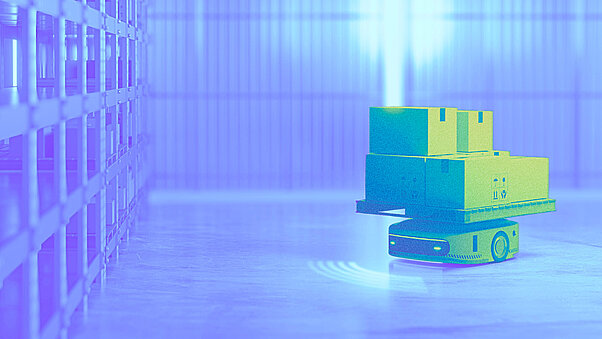What is a SKU? Everything important about the topic "Stock Keeping Unit" simply explained!

Have you ever heard of a SKU or Stock Keeping Unit? It's a code that many businesses use, but outside of stores and warehouses, not everyone knows about it. This unique code helps track and manage each product.
So, what exactly is a SKU and why is it important?
In this article, you'll learn all about SKUs, what they look like, and why they matter in storing and delivering goods.
What is a SKU? Defininition!
The abbreviation SKU stands for Stock Keeping Unit, often referred to as the item number or product ID.
- It is a unique identification number or code, which may consist of letters and numbers, assigned to a specific product in the warehouse.
- It helps determine exactly what the product is, including specific characteristics such as size, color, manufacturer and packaging unit.
- Think of the SKU as a product address that tells you what it is and where it is located.
This allows the product to be recognized and tracked in the system both in the store and later in the warehouse. In an order, each SKU represents a specific item.
What does a SKU look like?
An SKU can be a combination of letters, numbers, or both that describe different attributes of a product. There are no set rules for the structure of a SKU, and each company can use its own method to create it:

Some examples of SKUs might be:
- BOOK-HP1-HC for the first Harry Potter book in hardcover.
- JEANS-BL-32 for a pair of blue jeans in size 32.
- LAPTOP-15I7-512 for a laptop with a 15-inch screen, an Intel Core i7 processor, and a 512GB hard drive.
Difference from barcode
While a SKU is just a specific identifier within a company, a barcode is a universal product identifier that can be read by scanners.
SKUs are often intended for identification and management within a company, while barcodes are typically used for transactions and sales purposes across different companies.
How is an SKU created?
The creation of an SKU is a strategic process. It is often represented by a combination of letters and numbers that describe specific product attributes.
For example, "LAPTOP-15I7-512" might represent a laptop with a 15-inch screen, an Intel Core i7 processor and a 512GB hard drive.
- Companies define their own SKU systems to fit their specific products.
![[Translate to US:] Quivo Connector](/fileadmin/_processed_/d/e/csm_Connector_Screen_Black_f121fbb25e.png)
An example of an SKU: "SCREEN-15I7-512" for a computer with a 15-inch screen, Intel Core i7 processor, and 512 GB hard drive. Also shown in the picture is our LOGSTA Connector.
In our modern logistics management tool, you can assign your articles along with barcodes and SKUs so they can be mapped and processed in the warehouse.
How is a SKU generated and with which software?
The generation of a SKU is done by combining different product properties in a logical sequence. You can also use various SKU creation software to automate the process.
Software for Creating SKUs:
- There are free as well as paid software, mostly ERP systems, that make creating and managing SKUs easier.
- Programmes like Microsoft Dynamics or SAP Business offer convenient ways to create and manage products along with their SKUs.
These programs ensure that all SKUs are consistent across the company and make it easy to track them. This saves time and prevents errors because the software automates the process and stores all the information in one place.

Why are SKUs important in logistics and fulfillment?
In logistics, SKUs are essential because they greatly simplify the process of tracking and managing products. Unique identification increases inventory management efficiency, reduces errors, and enables quick response to customer demands.
SKUs also support warehouse forecasting by enabling and providing sales and movement data of products.
In fulfillment companies, SKUs assist in promptly and accurately processing orders, monitoring inventory levels, and optimising overall warehouse management.
- If you have questions about SKUs or are considering outsourcing your logistics: Don't hesitate to write to us!
Sources
Pictures:
Quivo / Logsta © 2024
Canva






